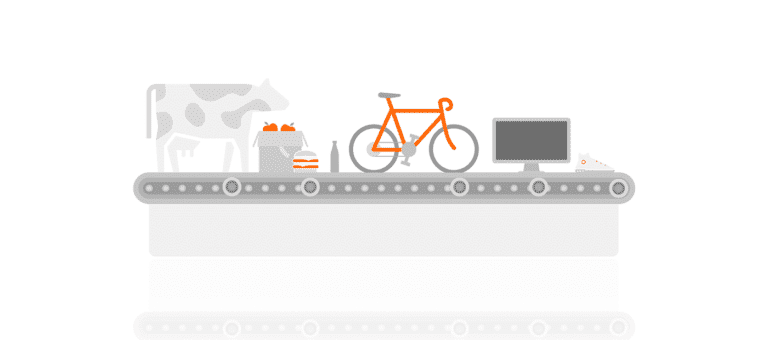Supply is a key driver of every economy. In this article you’ll learn the aggregate supply definition and find out how it works in the long run and short run. We’ll also take a look at the aggregate supply curve to examine what causes it to shift.
Aggregate Supply Definition
Aggregate supply refers to the total amount of goods and services produced in an economy over a given time frame and sold at a given price level. This includes the supply of private consumer goods, public and merit goods, capital goods, and even goods to be sold overseas.
For a more simplistic definition, we can say that aggregate supply reflects the relationship between the production level of the economy and price.
When prices are rising, it typically means businesses need to expand their production and supply to keep up with aggregate demand. If demand rises and supply remains constant, then consumers have to compete for the available goods. That in turn raises the price. Increasing the production level to sell more goods then normalizes price. The result is achieving equilibrium.
You may also like:
Aggregate Supply Curve
The aggregate supply curve shows a country’s real GDP. In other words the deliverables it supplies at different price levels. This curve is based on the premise that as the price level increases, producers can get more money for their products, which induces them to produce even more. However, this increase in price level will also have a second effect — an eventual increase in input prices (costs of production) which, all things being equal, will cause the producers to cut back on production.
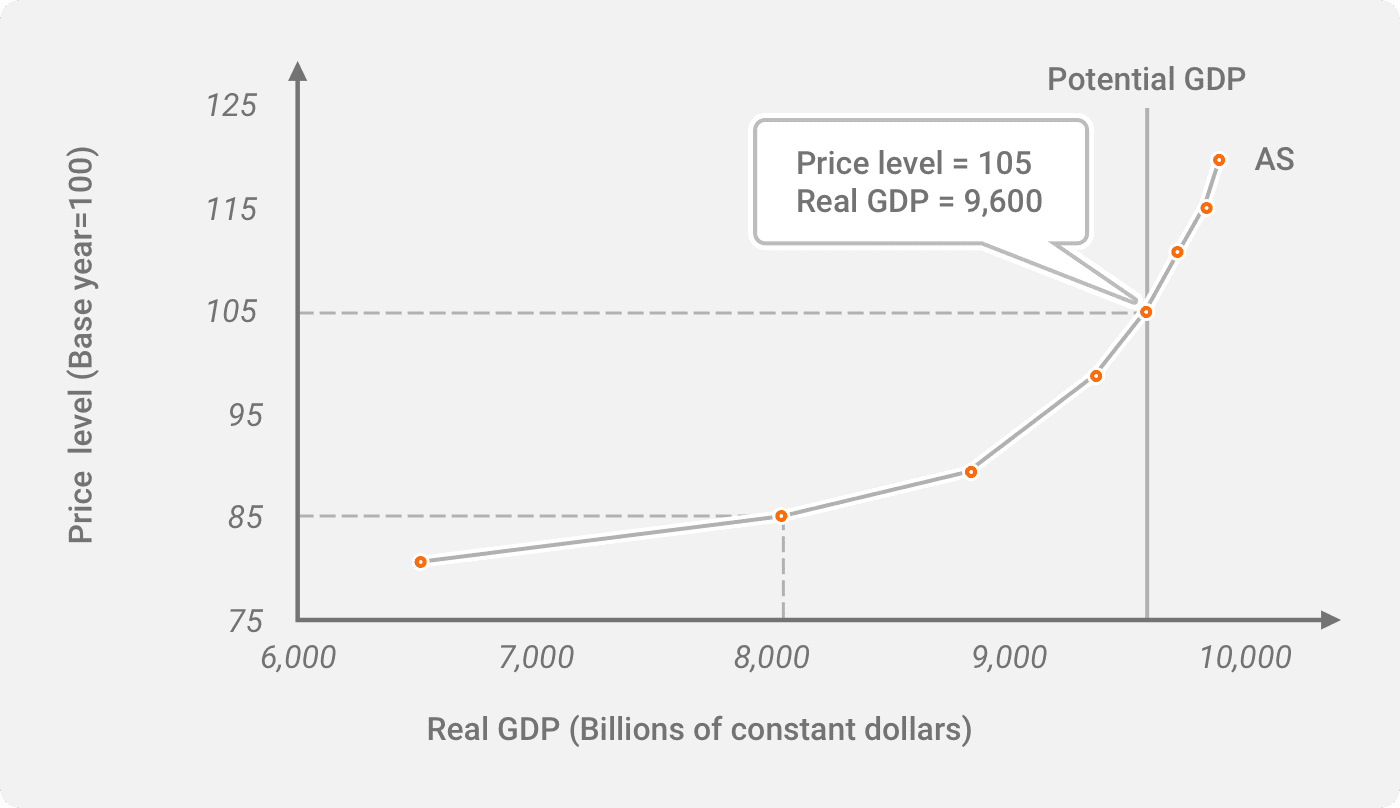
Source: khanacademy.org
Keep in mind that the premise for constructing the aggregate supply curve is different from the premise used for constructing supply curves for individual goods. The supply curve for an individual good assumes that input prices remain constant. As the price of a product goes up, the sellers’ per-unit costs of providing the product do not change, and so they are willing to crank the supply more. This is why the supply curve for individual goods typically has an upward slope.
Since there is some uncertainty as to whether a country’s economy can supply more real GDP amid a rising price level, it has become customary to differentiate between two types of aggregate supply curves. These two types are the long‐run aggregate supply curve and the short‐run aggregate supply curve. By distinguishing them, you have a more realistic overview of an economy’s aggregate supply.
We’ll come back to these curves in more detail as when we examine supply in the context of these timeframes.
What Shifts Aggregate Supply?
There are many variables that can cause a shift in aggregate supply. These include technological innovations, changes in labor size and quality, changes in production costs, availability of resources, subsidies, changes in wages and taxes, and the current inflation level. These factors can either lead to positive or negative shifts in the aggregate supply curve.
The aggregate supply curve shifts to the right following an increase in labor efficiency or a drop in the cost of production, lower inflation levels, higher output, and easier access to raw materials. On the other hand, there’s a shift to the left following a rise in production costs, higher tax and wage levels, or reduced labor efficiency.
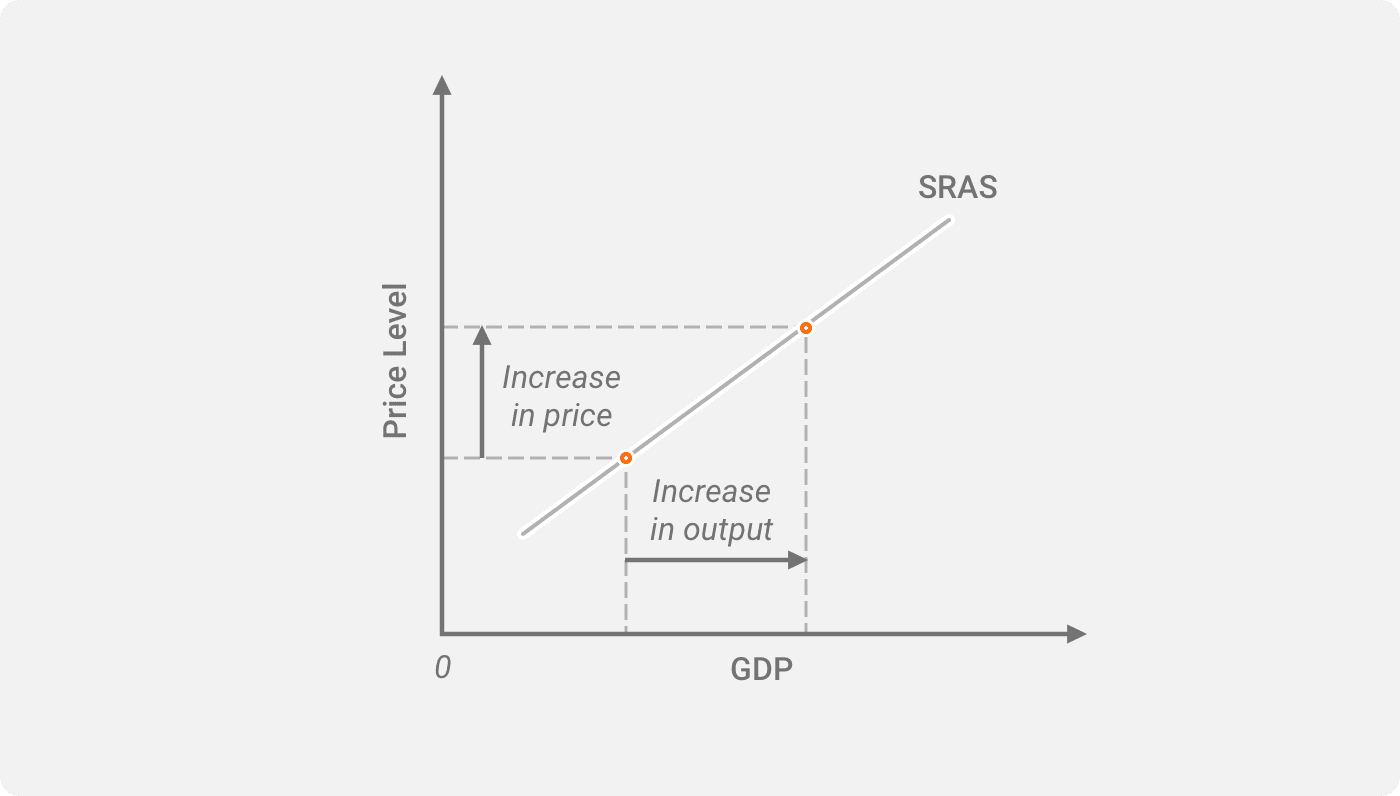
Aggregate supply curve shifts to the right or left based on changes in underlying factors | Source: opentextbc.ca
Long-Run Aggregate Supply (LRAS)
The long run is a conceptual time period in which there are no fixed factors of production. Essentially, the period should be to be long enough to allow for adjusting wages, prices, and expectation, but not long enough for physical capital to become a variable input.
With that in mind, we can then define the long-run aggregate supply (LRAS) as a concept that represents the optimum output that can be produced by an economy when it utilizes all its factors of production and therefore operates at full employment. In the long run, changes in price level don’t affect aggregate supply. The curve only shifts based on improvements in productivity and efficiency. These improvements typically include enhanced skill levels, newer advancements in technology, and increases in capital. This essentially means that price is inelastic in the LRAS.
One important thing to note is that there are different economic views about the long-run aggregate supply. For instance, the Keynesian LRAS theory asserts that long-run aggregate supply only remains price elastic up to a certain point. After this point, supply essentially becomes uninfluenced by price changes. In other words, there is a point in the economy where producers of goods and services can expand their capacity. However, once we reach that point, it wouldn’t matter whether price levels are rising or dropping.
The Long-Run Curve
The Long-Run Aggregate Supply (LRAS) curve is completely vertical. You’re probably asking why. It’s because the real GDP in the long-run is dependent on the supply of capital, labor, raw materials, and other factors outside of price. As such, the quantity produced within that period remains the same regardless of changes in the price level (price inelastic). This is a stark difference from the supply curve for individual goods which are upward sloping. In this case, it’s because the curve has to do with the prices of goods in relation to other goods or services. Businesses can, therefore, take advantage of relative prices to increase output.
As an example, suppose you run a distillery where you mass-produce bourbon and gin. If the price of bourbon rises, you can focus your resources on distilling more bourbon to take advantage of the price rise, hence the relative price influence on supply. With aggregate supply, however, the entire economy’s production will be limited by the availability of land, labor, capital, and other resources. It won’t matter whether the price levels increase or decrease, the overall output cannot go past the point allowed by the country’s available resources.
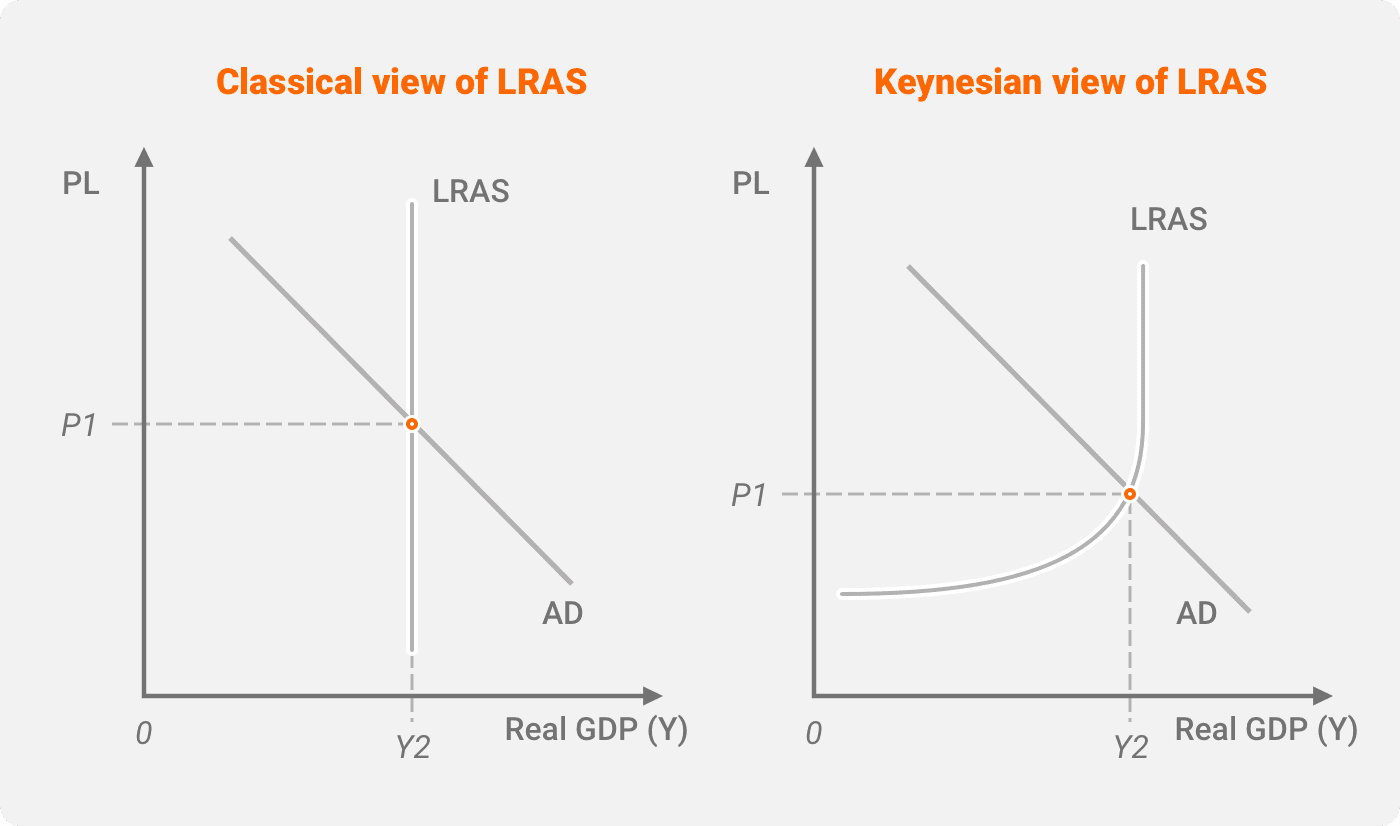
Classic and Keynesian LRAS Curves | Source: economicshelp.org
In the image above, you can see how the LRAS curve captures the relation between price level, aggregate demand, and the production flow over a given time period. In the classic view, even as the price rises, the LRAS remains vertical. Under the Keynesian LRAS curve, the price is elastic up to a certain point before it becomes vertical and insensitive to price.
Short-Run Aggregate Supply (SRAS)
Short-run aggregate supply refers to the total production of goods and services available in an economy at different price levels while some production factors and resources are fixed. This means certain capital-intensive resources are pretty much impossible to achieve in the short run. Not even if companies increase their supply due to rising prices by hiring more workers or extending work hours. These capital-intensive resources include things like office space, new machinery, and extra-skilled manpower.
There is no specific unit of time associated with the short-run period. It could mean two months or eight, or even a year. Instead of a fixed period of time, it is tied to the duration for which those resources are fixed. How quickly can the company set up a new factory or warehouse? What’s the time it’ll take to obtain a loan to purchase and install a new machine? At what rate can we train employees to expand their skills? The answer to these questions is what determines the length of the short run.
For the SRAS, the number of goods or services supplied increases as the price goes up. Therefore we generally view the SRAS as elastic. Mainly because in the short-run, companies can alter their variable factors of production to increase output.
The Short-Run Curve
In the short run, the aggregate supply curve reacts to the price level. This means it goes upward sloping rather than full vertical. The SRAS curve is also drawn to reflect some variables, such as the nominal wage rate. This nominal wage rate is fixed in the short run so a rise in price implies higher profit potential to justify the increase in production. This differs in the long run where the nominal wage rate is dependent on economic conditions (low unemployment levels lead to higher nominal wages and vice-versa).
The presumption underlying the SRAS curve is that providers of resources required for production do not immediately respond to the increase in price level. Let’s take the earlier distillery example for instance. If there was a general increase in price level for whiskey and gin, the distillery may expand production right away. However, the malt and barley farmers and the bottle packagers may not increase their own prices right away. It will take some time.
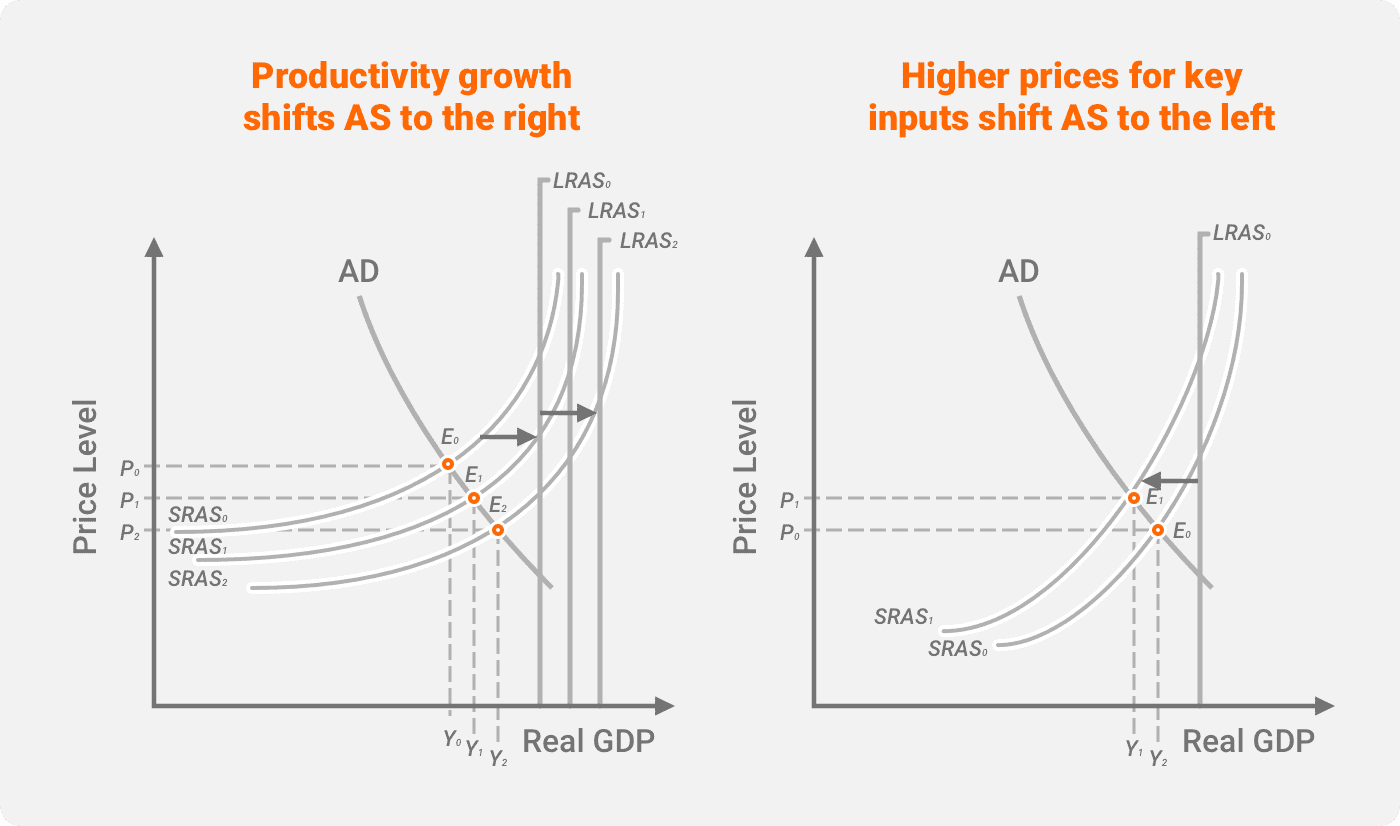
Short-term aggregate supply curve | Source: coursehero.com
The illustration above shows the direct relationship between changes in price level and the output quantity in the short run. The higher the price, the more output is supplied and vice versa.
Frequent Asked Questions
The short-run curve slopes upwards because it has a direct relationship with changes in the price level in the short run. The higher the price, the higher the output. This relationship is then drawn in an upward slope.
The long-run curve is vertical because in the long run, changes in price do not affect the total output. Instead it’s other factors of production that influence total output. These include labor, resources, and capital.
The aggregate supply curve describes the relationship between real GDP and changes in price levels. We can break it down into two main curves in the short run and the long run. Their names are the short-run aggregate supply (SRAS) and long-run aggregate supply (LRAS) curves.
An increase in price level in the short-run aggregate supply (SRAS) means a resulting increase in the total output as companies look to profit from higher prices. This goes back to the notion that the short-run curve is upward sloping. The higher the price, the higher the output due to a company’s desire for profit.
